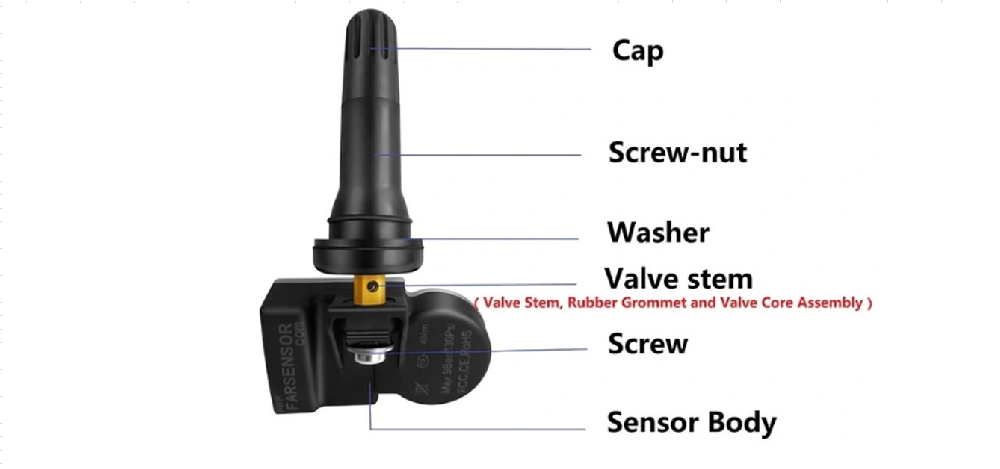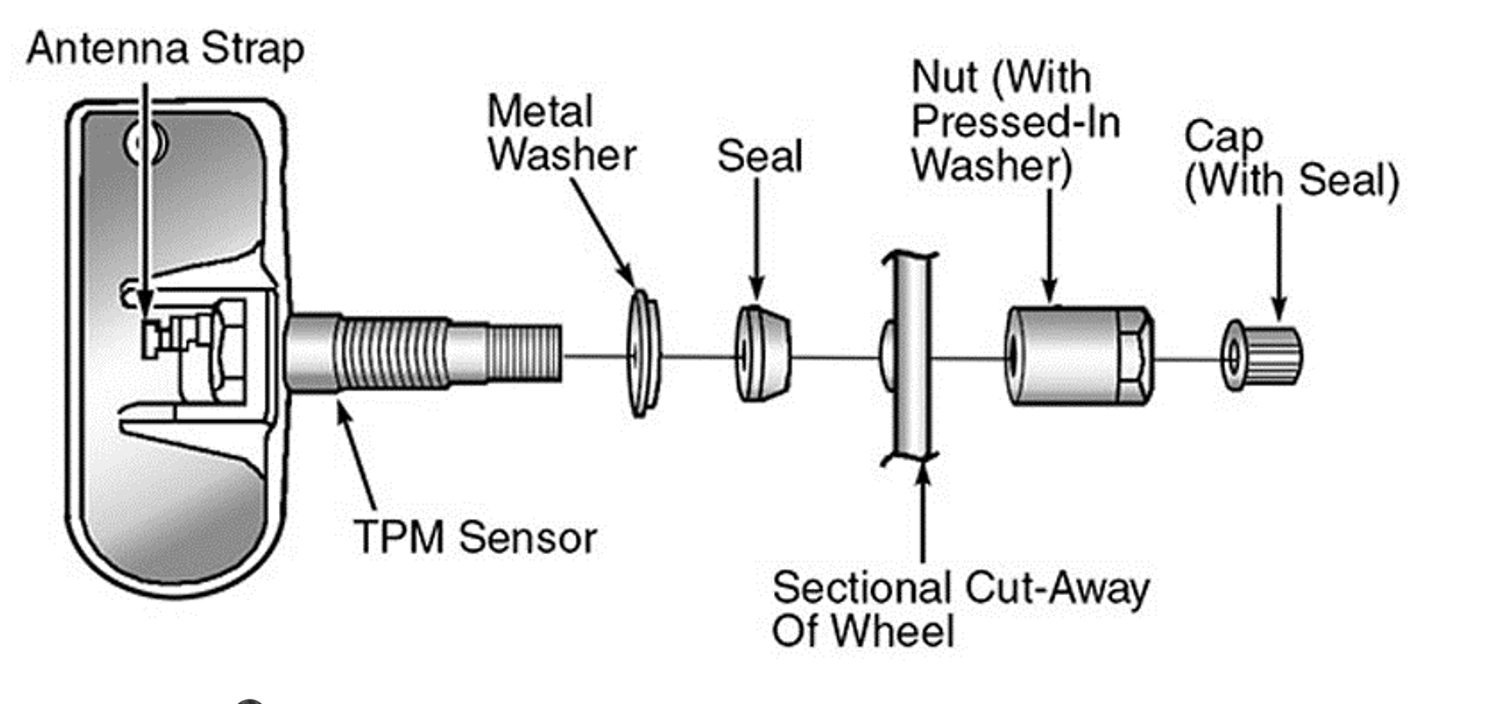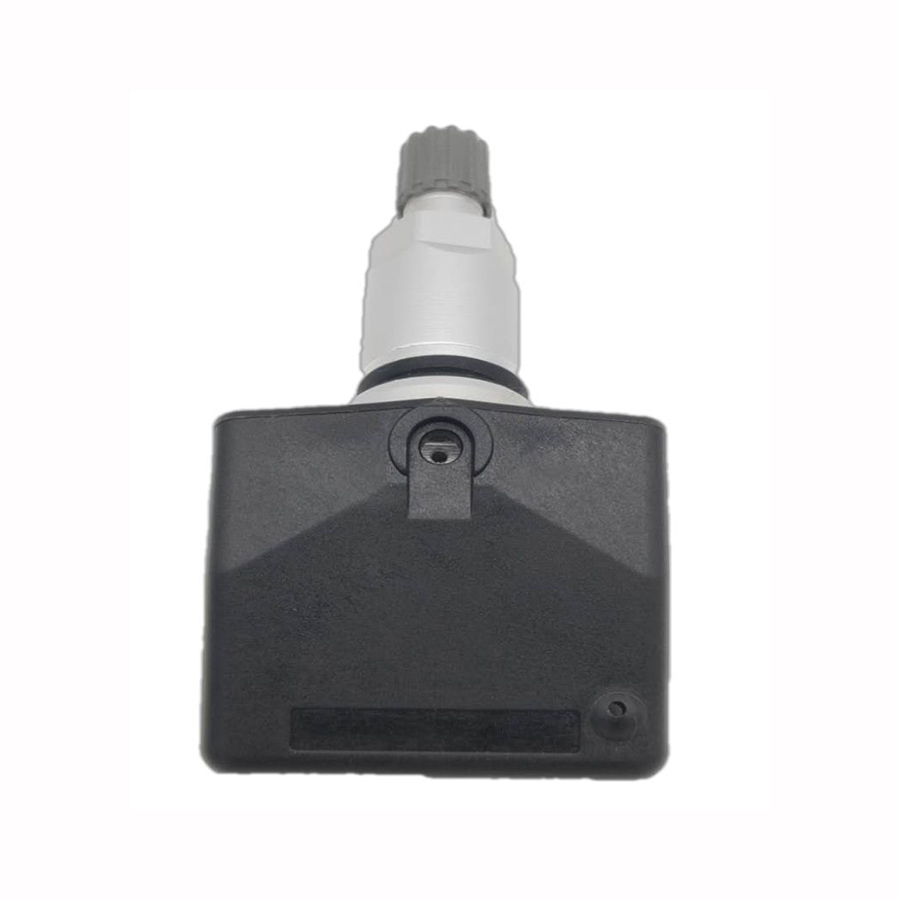OEM:
13172567
Compatible Vehicles:
Buick:RWD 2005/01-2008/12

A tire pressure sensor, also known as a tire pressure monitoring system (TPMS) sensor, is a device used to monitor the air pressure inside a vehicle's tires. It is an essential component of modern vehicle safety systems, helping to ensure proper tire inflation, which is crucial for optimal vehicle performance, fuel efficiency, and safety. Here’s a detailed description:
Components and Functionality
Sensor Unit:
Pressure Sensor: Measures the actual pressure within the tire.
Temperature Sensor: Some advanced sensors also measure the temperature of the air inside the tire, as temperature can affect pressure readings.
Transmitter: Sends the pressure data to the vehicle’s onboard computer or a dedicated TPMS receiver.
Types of TPMS:
Direct TPMS: Uses sensors mounted directly on the tire valve or inside the tire to measure the exact air pressure. Each sensor communicates wirelessly with the vehicle’s computer system.
Indirect TPMS: Estimates tire pressure indirectly by using the wheel speed sensors of the anti-lock braking system (ABS). It detects differences in rotational speed between tires to infer pressure loss.
Power Source:
Most TPMS sensors are battery-powered, with a lifespan typically ranging from 5 to 10 years. Some advanced systems can harvest energy from the tire’s motion.
Data Transmission:
The sensor transmits data wirelessly to the vehicle’s onboard computer. The data is often displayed on the dashboard, alerting the driver to any pressure anomalies through visual (light indicators) and auditory (warning beeps) signals.
Benefits
Safety: Proper tire pressure ensures optimal contact between the tire and the road, enhancing braking performance, handling, and overall vehicle stability.
Fuel Efficiency: Correct tire pressure reduces rolling resistance, which can improve fuel economy.
Tire Longevity: Maintaining the correct pressure helps prevent uneven tire wear, extending the lifespan of the tires.
Environmental Impact: Properly inflated tires contribute to better fuel efficiency, thereby reducing carbon emissions.
Maintenance
Regular Checks: Even with TPMS, it's important to manually check tire pressure periodically, as TPMS sensors can sometimes fail or provide inaccurate readings.
Sensor Replacement: TPMS sensors typically need to be replaced when their batteries die or when they are damaged. Some systems allow for battery replacement, while others require the entire sensor to be replaced.
Common Issues
Sensor Failure: Sensors can fail due to battery depletion, damage from road debris, or corrosion.
Interference: Wireless signals from the sensors can sometimes be affected by external electromagnetic interference.
Calibration: After tire rotation, replacement, or repairs, TPMS sensors often need to be recalibrated to ensure accurate readings.
Overall, tire pressure sensors are a critical component of vehicle safety systems, providing real-time monitoring and alerts to help drivers maintain proper tire pressure, ensuring safety, efficiency, and performance.

Tools and Materials Needed
New TPMS sensor
Tire changing tools (jack, lug wrench, etc.)
Valve core removal tool
TPMS scan tool (optional, for programming the new sensor)
Torque wrench
Tire bead breaker (optional, for more stubborn tires)
Safety gear (gloves, safety glasses)
Steps to Change a Tire Pressure Sensor
1. Preparation
Park the Vehicle: Ensure the vehicle is parked on a flat, stable surface.
Turn Off the Engine: Ensure the engine is off and the parking brake is engaged.
Gather Tools: Make sure you have all the necessary tools and materials at hand.
2. Lift the Vehicle
Loosen the Lug Nuts: Slightly loosen the lug nuts on the wheel where the TPMS sensor needs to be replaced.
Lift the Vehicle: Use a jack to lift the vehicle and secure it with jack stands.
Remove the Wheel: Fully remove the lug nuts and take off the wheel.
3. Deflate the Tire
Remove the Valve Core: Use a valve core removal tool to deflate the tire completely.
4. Break the Tire Bead
Break the Bead: Use a tire bead breaker or a similar tool to break the bead of the tire from the rim on the side where the TPMS sensor is located.
5. Remove the Old TPMS Sensor
Access the Sensor: Push the tire sidewall down to access the TPMS sensor.
Remove the Sensor: Use the appropriate tool to unscrew the TPMS sensor from the valve stem. Be careful not to damage the valve stem if you plan to reuse it.
6. Install the New TPMS Sensor
Attach the New Sensor: Screw the new TPMS sensor onto the valve stem. Ensure it is securely fastened according to the manufacturer’s specifications.
Reinflate the Tire: Replace the valve core and inflate the tire to the recommended pressure.
7. Reinstall the Wheel
Reinstall the Wheel: Put the wheel back on the vehicle and hand-tighten the lug nuts.
Lower the Vehicle: Carefully lower the vehicle back to the ground using the jack.
Tighten the Lug Nuts: Use a torque wrench to tighten the lug nuts to the manufacturer’s recommended torque specification.
8. Program the New TPMS Sensor
Use a TPMS Scan Tool: Some vehicles require the new TPMS sensor to be programmed to the vehicle’s onboard computer. Use a TPMS scan tool to complete this step. Follow the tool’s instructions for your specific vehicle.
Check the Dashboard: Start the vehicle and check the dashboard to ensure the TPMS warning light is off. If it remains on, you may need to drive the vehicle for a few miles or follow additional reset procedures outlined in the vehicle’s manual.
Tips and Warnings
Safety First: Always wear appropriate safety gear and follow safety procedures when working on a vehicle.
Check the Manual: Consult your vehicle’s owner manual for specific instructions and torque specifications.
Professional Help: If you are unsure about any step, consider seeking help from a professional mechanic.
By following these steps, you can replace a tire pressure sensor and ensure your vehicle's TPMS is functioning correctly.

